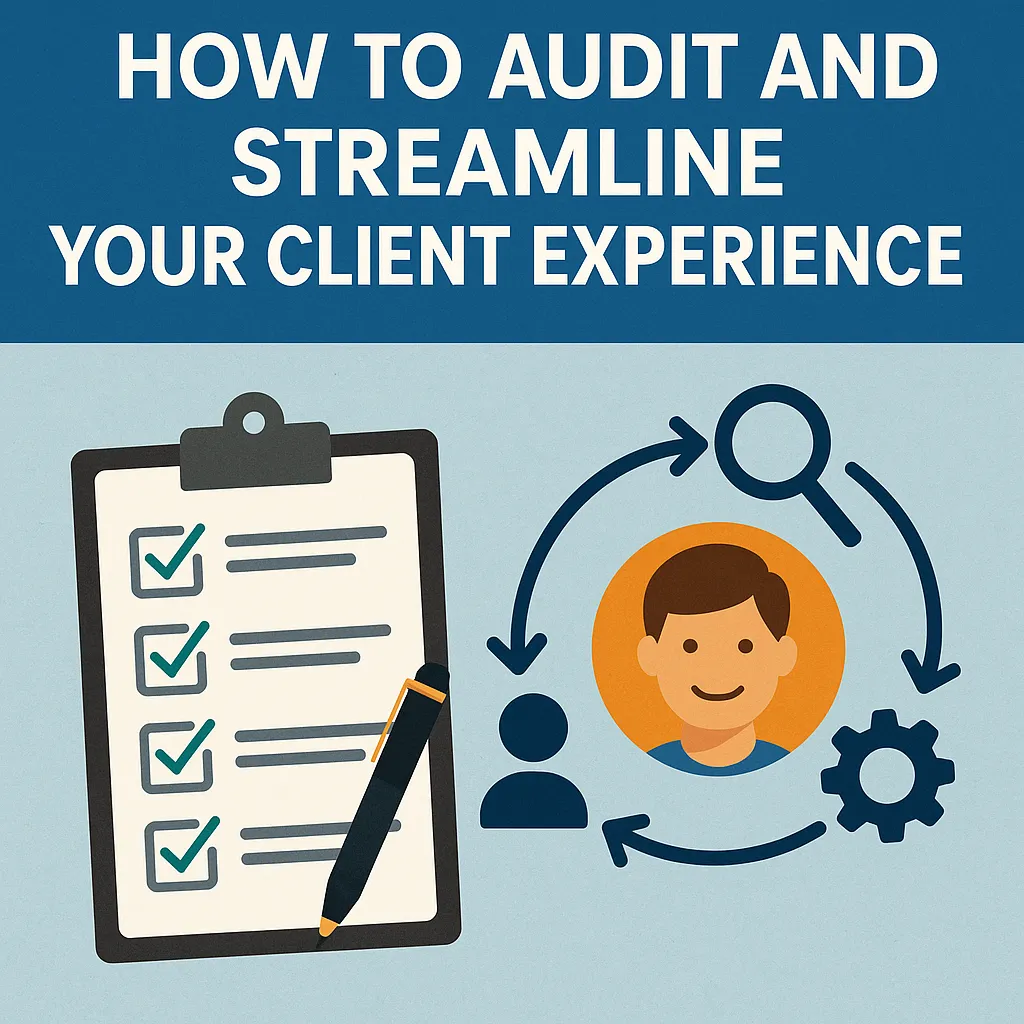In today’s competitive market, a smooth, intentional client experience isn’t just a nice-to-have — it’s a strategic advantage. Clients remember how you made them feel even more than the service you provided. For small business owners, auditing and streamlining the client journey can lead to better retention, stronger referrals, and higher lifetime value.
Step 1: Map the Entire Client Journey
Start by documenting every interaction a client has with your business, from first discovery to offboarding.
- Discovery: How do clients first hear about you?
- Onboarding: How is information gathered and expectations set?
- Delivery: How is the service or product experience structured?
- Follow-up: How do you ensure client satisfaction and collect feedback?
Step 2: Collect Honest Client Feedback
Don’t guess — ask. Use surveys, interviews, or direct outreach to gather insights on:
- What clients loved
- What confused or frustrated them
- Where they see room for improvement
Tools like Typeform or SurveyMonkey can make it easy and accessible.
Step 3: Identify Friction Points
Analyze client feedback and your journey map to spot where clients hesitate, disengage, or express dissatisfaction. Common friction points include:
- Confusing onboarding processes
- Slow communication during key phases
- Inconsistent service quality
Step 4: Prioritize Key Improvements
You likely can’t fix everything at once. Focus on improvements that:
- Directly impact client loyalty or satisfaction
- Eliminate repeated frustrations
- Require minimal resources to implement
Step 5: Implement Systems and Automation
Simplify where possible. Implement workflows, templates, and automation tools to:
- Standardize client communications
- Ensure timely follow-ups and updates
- Personalize the client experience without extra effort
Systems not only save you time — they ensure clients feel consistently valued.
Step 6: Train Your Team
If you have a team, ensure everyone understands the updated client experience. Create simple SOPs (Standard Operating Procedures) for:
- Initial client contact
- Handling complaints
- Delivering exceptional service at every touchpoint
Step 7: Monitor and Adjust Regularly
Client expectations evolve. Commit to a biannual or annual review of your client experience process, using fresh feedback to guide continual improvements.
“You don’t have to be perfect — you have to be consistently improving.”
Final Thoughts
Auditing and streamlining your client experience isn’t a one-time project; it’s a leadership mindset. When you prioritize the client journey, you don’t just create happy customers — you build lasting loyalty and advocacy for your brand.
Want expert guidance on optimizing your client experience? Book a Discovery Call with us today!


